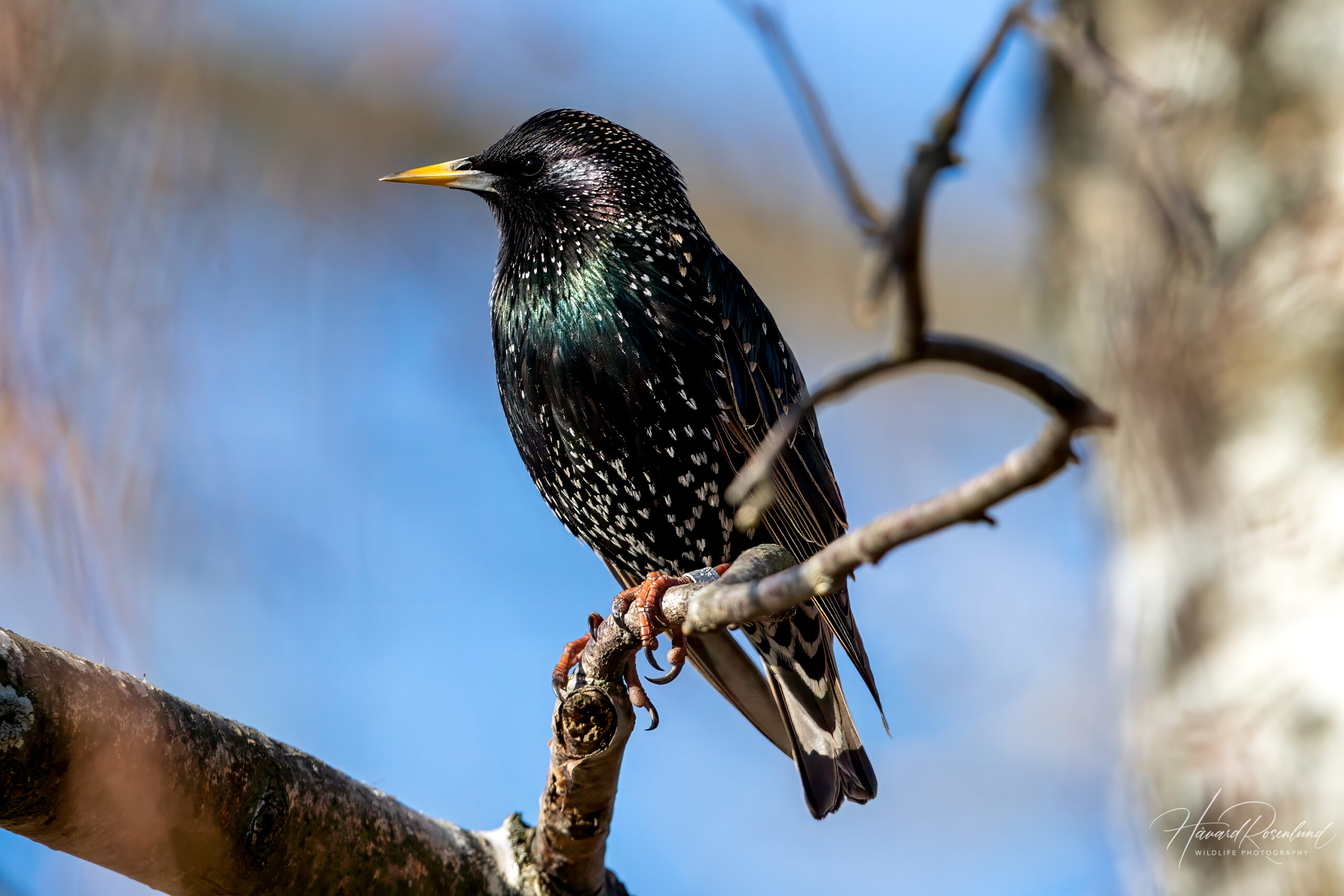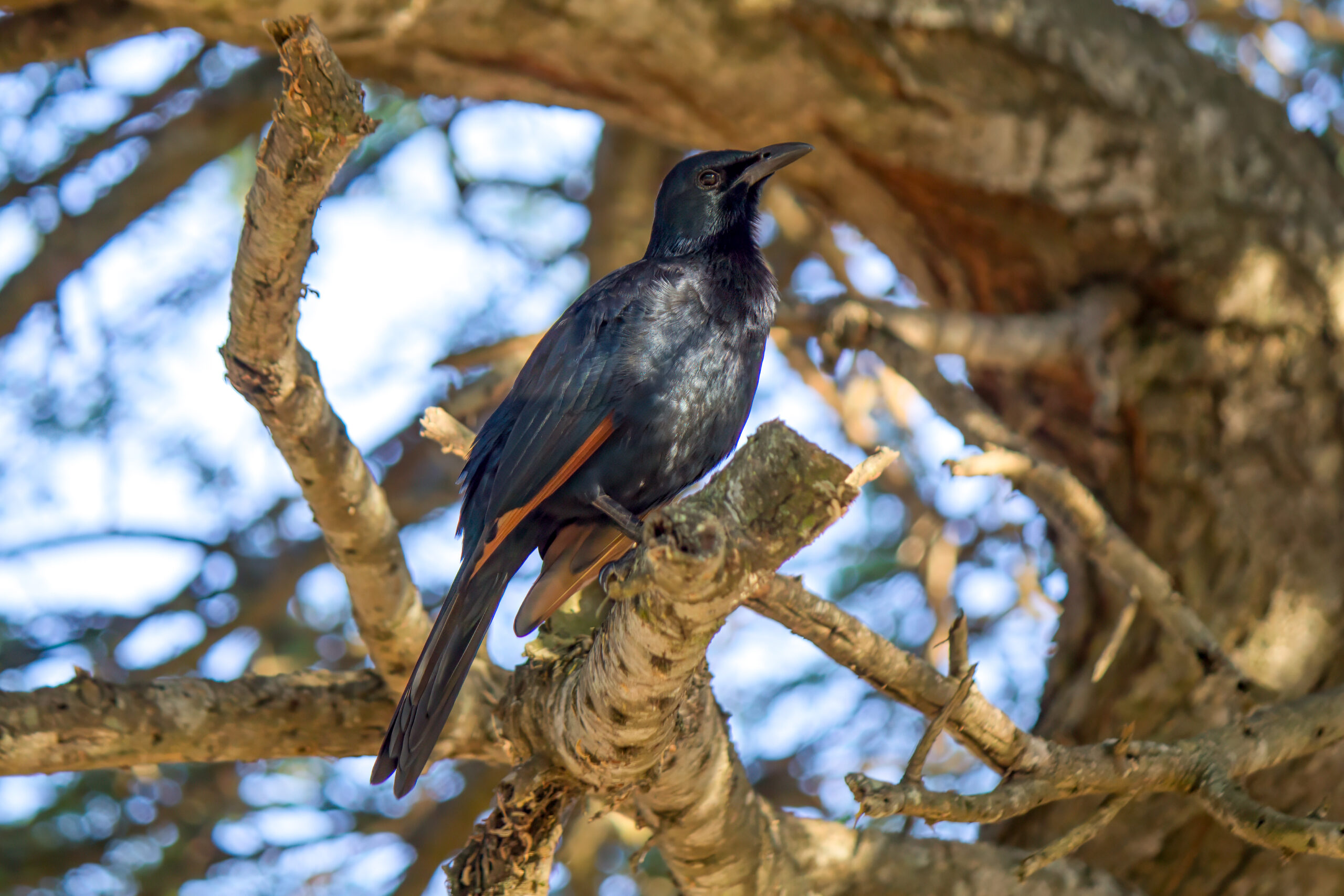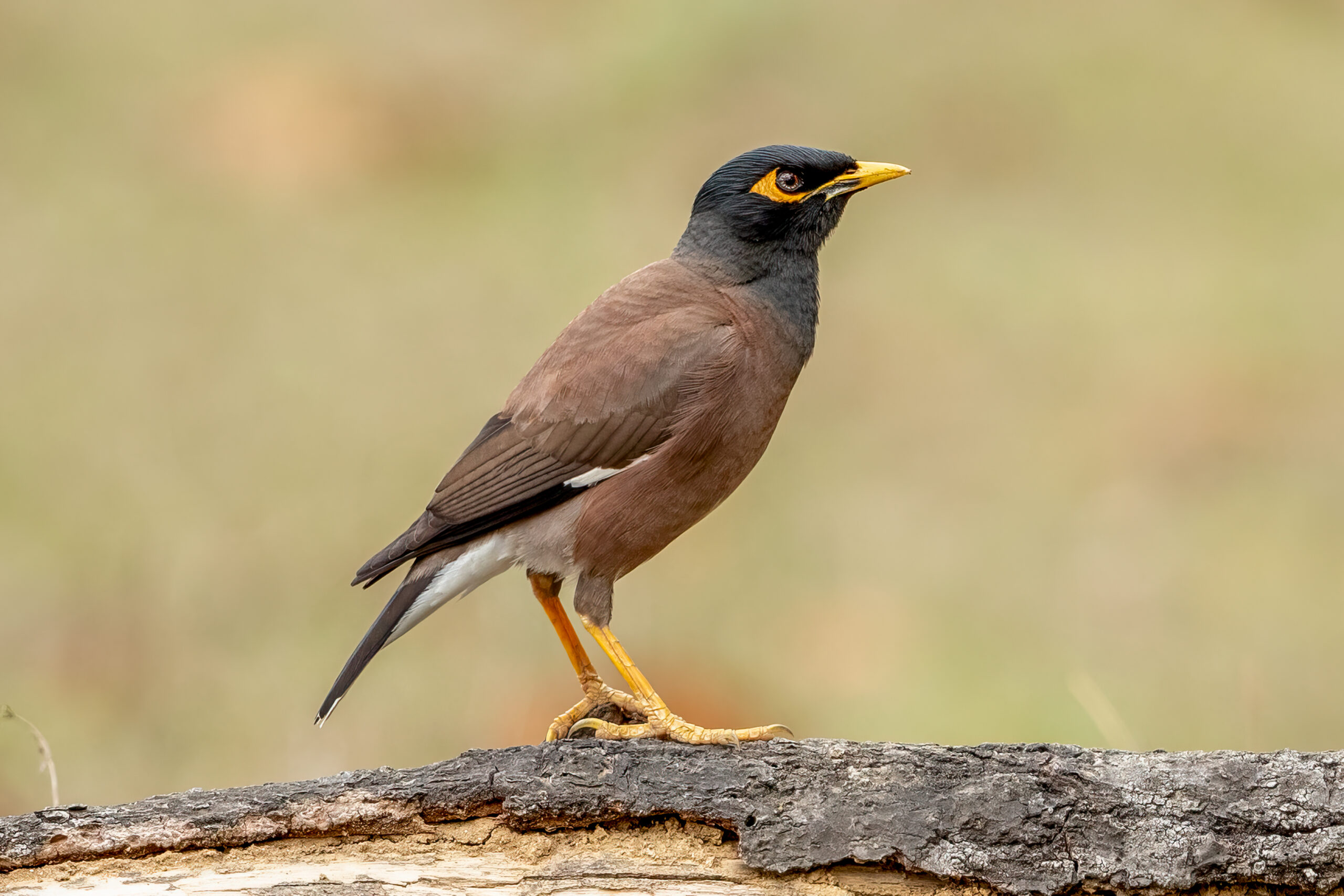Description
The common starling (Sturnus vulgaris), also known as European starling, is a medium-sized passerine bird with a native range that covers most of Europe, northern Africa, and western Asia. It reaches a length of about 20 cm (8 in) and a wingspan of 31-44 cm (12-17 in). It has a short tail and pointed wings, making it very agile in flight. Adults have iridescent black feathers with a metallic sheen, which are dotted with light spots. The bill is yellow in breeding adults and dark in non-breeding adults and juveniles. They are capable of mimicking a wide variety of sounds, including the calls of other bird species and human-made noises. The common starling is also known for its spectacular murmurations, where thousands of birds fly in intricately coordinated patterns in the sky, especially during the evening roosting period.
Diet & habitat
Common starlings are omnivorous, feeding on a wide range of invertebrates, fruits, and seeds. They are known for their method of foraging, which involves probing the ground with their strong bills to flush out prey. Their habitat ranges from open country and farmlands to urban areas. They are highly adaptable and can also be found in forests, grasslands, and near bodies of water.
Migration
Common starlings exhibit complex migration patterns that vary across their range. European and North American populations are partially migratory. Northern populations tend to migrate southward to spend the winter in warmer climates, while those living in milder regions may be resident or perform shorter migrations. The migration journey can be extensive, with some birds traveling thousands of kilometers.
Nesting
The breeding season for common starling usually begins in early spring. They are cavity nesters, often using holes in trees or buildings, and will aggressively compete for nesting sites. A typical clutch consists of 4-6 blue, unmarked eggs. Both parents incubate the eggs for about 12 days. The fledging period is about 21-23 days, during which both parents feed the chicks.
Introduced populations
Common starlings have been introduced to Australia, New Zealand, South Africa, North America, and other parts of the world. The introduction in North America in the late 19th century is particularly notable. From the release of about 100 individuals the common starling has become one of the continent’s most widespread and abundant birds. While they are admired for their adaptability and the control of agricultural pests, they are also criticized for competing with native species and damaging crops. Because of its impact on local ecosystems, particularly causing decline in native bird species due to competition, it is listed as one of the world’s top 100 worst invasive species.
Status
The common starling has a large range, both native and introduced, and there are believed to be about 150 million adult birds. It is therefore listed as least concern on the IUCN Red List. However, in its native range in Europe, the species has seen a steep decline in some areas, with as much as an 80% reduction in the United Kingdom from 1966 to 2004. Major declines have also been observed in Scandinavia and other parts of Northern Europe. The cause is most likely changes in agricultural practices and pesticide use, which has removed suitable habitat and left fewer insects available to be consumed by chicks during breeding season.











